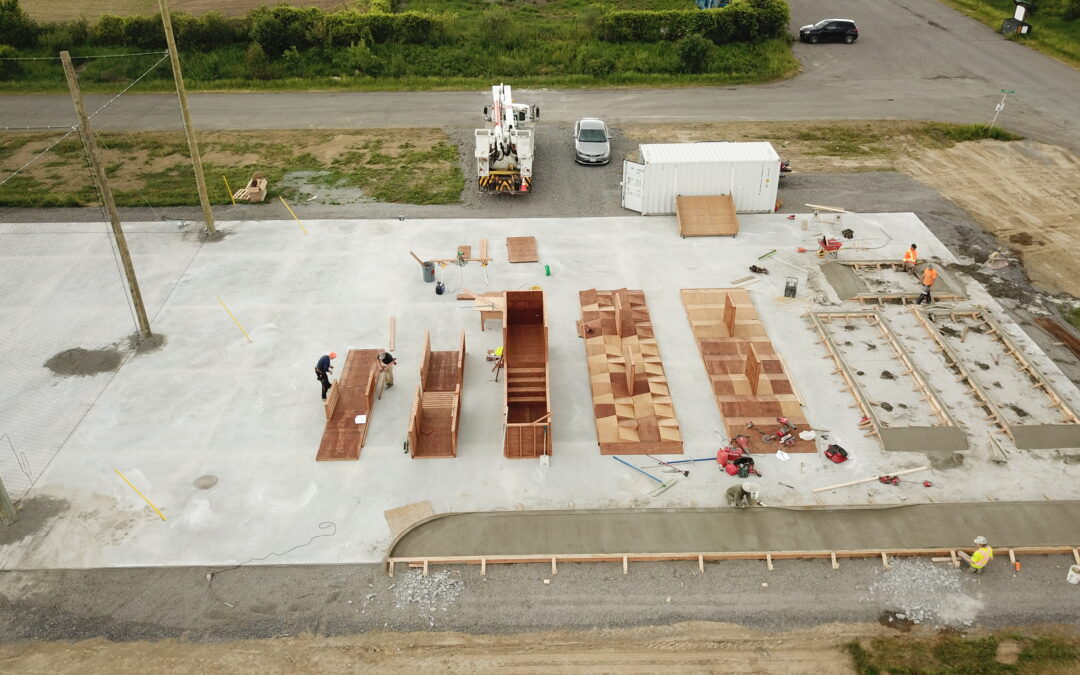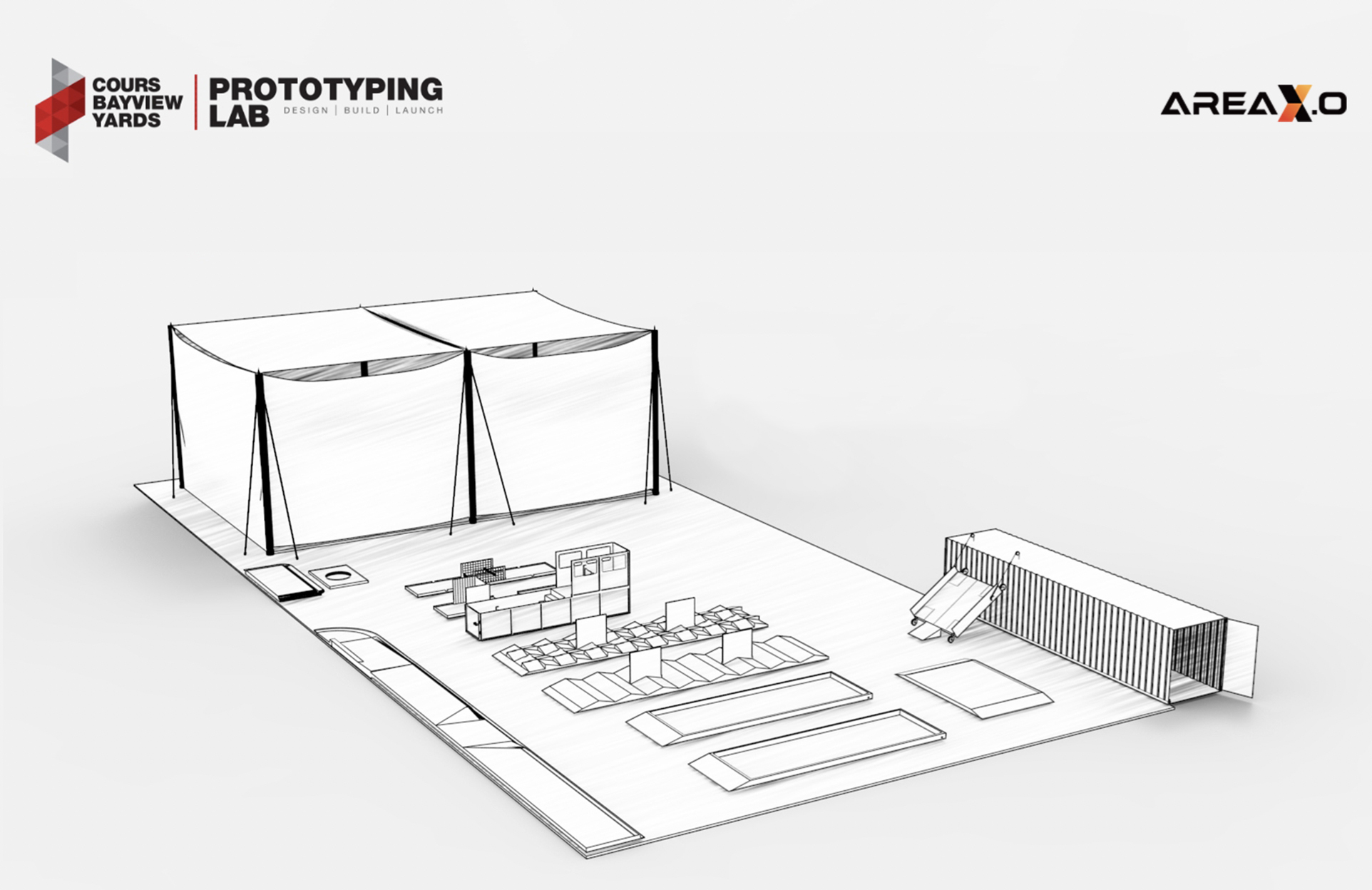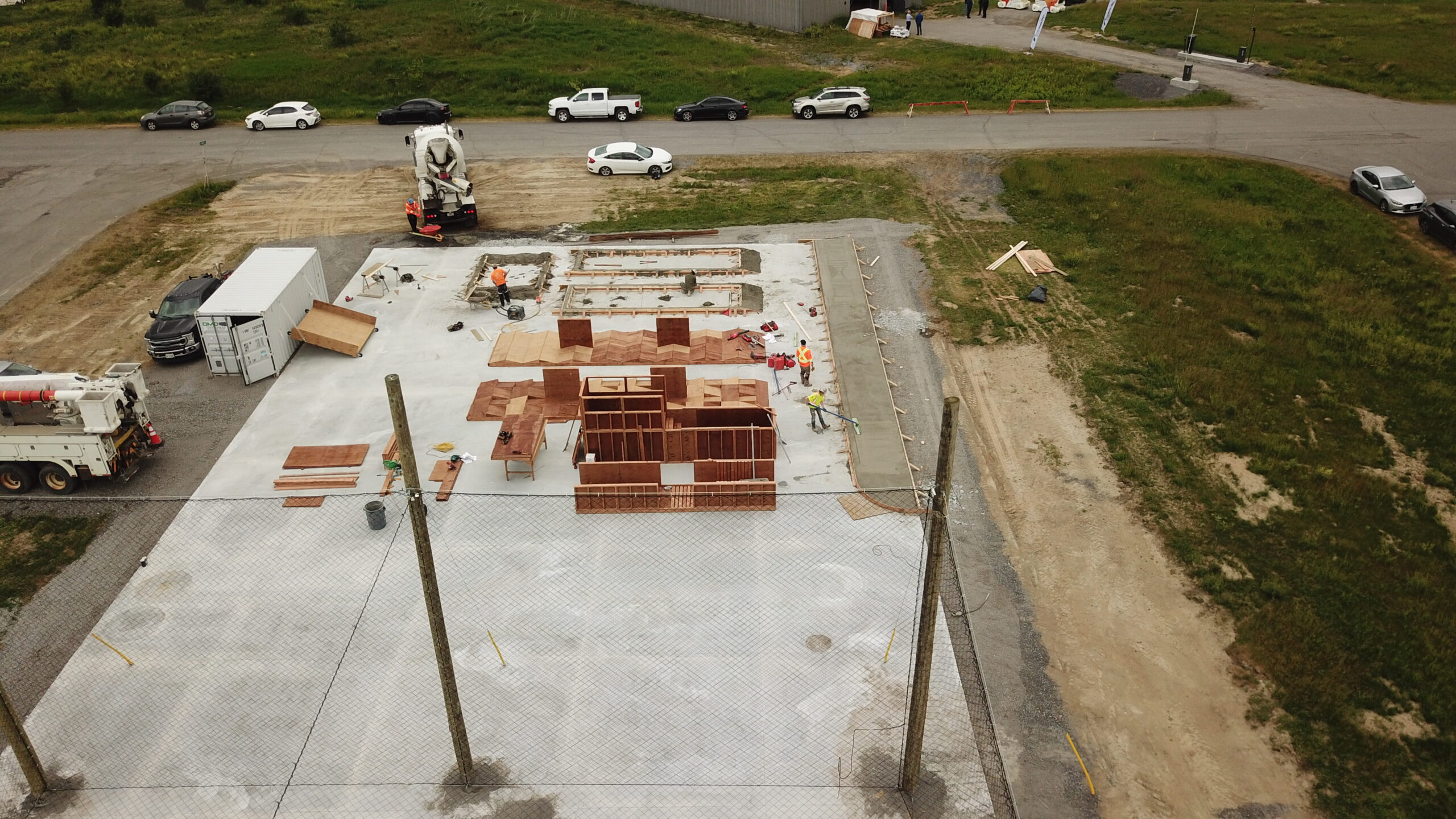By Scott Simmie
It’s nearly here.
On June 21, Canada’s first ever Drone and Advanced Robot Training and Testing Zone (DARTT) will open.
It’s all happening at Area X.O – the Ottawa Research and Development complex operated by Invest Ottawa. It’s where companies like InDro Robotics invent, test and perfect new technological smart mobility solutions before commercialising them.
The zone will offer challenges built to demanding criteria set out by NIST – the US-based National Institute of Standards and Technology. NIST courses are frequently sought out by operators wanting to reach the highest level of skills in drone and robot deployment. First Responders and high-level Enterprise operators in the US frequently attend training sessions that follow NIST criteria.
“It’s going to be an incredible asset and the first of its kind in Canada,” says Rebecca Thompson, Senior Manager of Operations at Area X.O. “It will allow for drone and ground robot training and performance testing – and supporting the small-to-medium enterprises and the many other clients that we serve.
“Having the capability to support companies to advance their skills, certify their technologies, and get trained up on specialised operations the market is demanding is critical. So we’re excited about this.”
Below: A CGI look at the facility’s design:
HOW DID THIS COME ABOUT?
We didn’t know the answer to that when we first began researching this post. The answer? A discussion.
“It was actually a conversation between (InDro CEO) Philip (Reece) and myself,” explains Thompson. “Having InDro here at Area X.O as one of our tenants and partners – and given the amount of focus on drones and robots in the industry – we asked ‘How do we support these partners? What is Area X.O missing? What can we add on?'”
Reece suggested that an advanced facility for training, testing and evaluation would be of benefit. Such a place would fill a definite void – especially given the tremendous growth in both aerial and ground robots.
“When Philip brought forth the idea it was a no-brainer,” says Thompson. “So in collaboration we were able to bring this to my leadership team here at Area X.O. And we brought the opportunity to FedDev Ontario and they agreed. They felt this was a way to enhance the capabilities and assets we already had at Area X.O – and to support the companies that require somewhere to test, validate and trial new technologies.”
FEATURES
One of the interesting features of the new facility is an outdoor, netted space for secure and confined drone testing. The ability to fly within this setting will enable safe testing of new drone technologies – including failsafe systems – within a secure area. What might happen if a drone loses satellites or a 5G signal mid-flight? What if the Inertial Measurement Unit failed? What if a company wants to test a completely new design that’s never flown in the wild before?
Testing these sorts of scenarios in an open space always carries with it a greater degree of risk. And, in some cases, would require a Special Flight Operations Certificate from Transport Canada. Flying within a netted enclosure will allow for such testing without special permissions, since there’s no risk of conflict with crewed aircraft or people and property on the ground.
In addition, ground robots will face challenging terrain at the new site, including multiple test beds featuring different substances. These Uncrewed Ground Vehicles (UGVs) will be tested over sand, gravel, uneven concrete surfaces and even water and mud. There will also be an inclined ramp that can be positioned at various angles. Operators will have to navigate that challenge while also exploring the limitations of the robots.
There will also be the familiar bucket test. Buckets placed at specific locations and angles will challenge drone pilots to precisely position UAVs and gimbals in order to reveal a letter, number or symbol affixed to the bottom of the bucket. Only by getting the drone and camera lined up in *just* the right spot will the operator be able to identify the target. These kinds of skills are particularly useful for Search and Rescue teams, law enforcement and other First Responders.
Once a pilot is able to successfully navigate the course, performance is timed
Below: A preliminary plan for the facility
DESIGN
So how do you design a test facility when it’s the first of its kind?
With a solid background in the field and plenty of research.
The task went to InDro’s Brian Fentiman, who worked with the RCMP for 34 years. Three years were as an RPAS specialist, building out the Small Uncrewed Aerial Systems (sUAS) program – as well as a Counter-sUAS program – for the RCMP in British Columbia. He has trained and supported First Responders, forensic investigators, Search and Rescue teams and tactical units. He has also designed several drone training courses.
“I was asked to put my input into the design of a NIST facility, which would use standard American Society for Testing and Materials (ASTM) tests, which NIST facilities do, to test both drones and ground robots,” says Fentiman.
“First Responder agencies are always looking for a way to measure up against industry standards. They’re usually cutting-edge, but they’re not always up on the technical side of things as for how to select the correct hardware, and how to train or set standards for their operators in using those items. This facility will allow people can test without having to build all this infrastructure themselves.”
CLIENTS
So: Who will benefit from such a facility?
It’s been very deliberately designed to offer both training and testing/evaluation, meaning it will likely appeal to two very different client sets. And that includes the world of R&D.
“There are going to be manufacturers that want their product tested during development,” says Fentiman. “(Plus) Police departments, fire departments, First Responders – as well as any professional agency that’s using drones.”
He adds that while some of the tests are particularly suited for First Responders and Search and Rescue units, “I believe a lot of the tests are applicable to any agency that’s using drones.”
Area X.O’s Rebecca Thompson believes the facility will also appeal to other sectors, including “academia, defence, precision agriculture, high-level Enterprise operators… We’ve considered the needs of all potential users in the end design.”
Below: Ground robots of all shapes and sizes will be able to test their mettle (and operator skills) at the new Area X.O facility
WHY IS TRAINING, TESTING IMPORTANT?
We posed that question to Kate Klassen, a commercial pilot and flight instructor – who is also one of the most recognized and respected online drone trainers in Canada. Klassen is also the architect and instructor of FLYY, which offers aspiring drone pilots everything they need to obtain their Basic or Advanced RPAS certificate – along with much more.
“As the RPAS industry matures, there’s an evolving need for specialized training in some of the niche areas that have developed,” she says.
“Applications are ever-expanding and the need for qualified operators to fill those roles is so great we don’t have time to wait for skills to develop over years of experience. We need those capable operators now! This new facility will enable operators to build skills in real, but safe, scenarios.”
Klassen, co-chair of Transport Canada’s CanaDAC Drone Advisory Committee, is also among the advocates for micro-credentials in the drone and ground robot world. Standardized, focussed courses in specialties like photogrammetry, thermal and night missions, and payload operations would give operators high-value skills within a course setting, rather than trying to learn on the job. (Plus, in a Catch-22, many are denied job opportunities because they don’t yet possess those specialized skills. We recently took a deeper dive into the case for micro-credentials here.)
Klassen, like others, eagerly anticipates the opening of the facility. We asked her why she’s excited.
“Oh man, so many reasons. For the first time we’re seeing a ground and air robot (drone) training and testing space and I think we’ll see those technologies work more closely together in the future, too,” she says.
“As an educator, I’m excited for the course offerings we’ll be able to put together. So much thought has gone into the details and facilities in this space – and I can’t wait to see how it’s received.”
STARTING OUT?
If you’re interested in obtaining your Basic or Advanced RPAS Certificate, Klassen’s FLYY is one-stop shopping. Full Disclosure: Klassen works with InDro, and InDro has a financial stake in FLYY. But also Full Disclosure: Klassen truly is a pioneer and respected expert in the world of online training. The first course she created trained more than 10,000 drone pilots in Canada. Plus, as a traditional crewed aircraft instructor, she knows the regulations inside and out.
But why pay for a course when you can find videos on YouTube?
“YouTube can be a great resource, but the challenge is knowing the accuracy and validity of the information,” says Klassen.
“You want to trust the training provider, know their credentials and that they have the experience and expertise to be the one providing the training! In addition to video modules, FLYY also provides downloadable resources, interactive lessons and the ability to download for offline viewing.”
What’s more, FLYY offers a number of specialized courses and mini-courses.
“In addition to Basic through Advanced knowledge requirements, FLYY offers a guide to developing your own SOP, how to prep for your flight review – even online flight training with animations. Each course offers digestible segments that you can do as you have time. If you leave midway, it remembers where you left off. There’s also a community forum to ask questions and chat with experts and other students.”
If you want to get your drone training off to a solid and recognized start, FLYY is offering 10 per cent off for its online courses. Use code “springisintheair” at checkout.
Below: The new training and testing facility, under construction, in early April. DARTT will officially open June 21, 2023
INDRO’S TAKE
It’s no surprise that we’re thrilled about this facility.
InDro will be using it to put our own technology (and operators) to the test – and will also be running the training, testing and evaluation at the site. Courses are currently in the final stages of being designed to maximize exploiting the new facility’s many features (and challenges).
“This training and testing site will be hugely beneficial to a wide range of clients,” says InDro CEO Philip Reece. “Many in the industry have heard about it, and we’ve already been receiving inquiries – a sign that there’s going to be real demand.
“We particularly grateful to Area X.O’s Rebecca Thompson, who immediately understood the value of this concept and helped share that vision with Invest Ottawa. The industry also owes a nod to FedDev Ontario, which also recognized this project’s value with financial backing.”
We’ll report back to you when the facility opens. If you’re interested in booking for training, testing or evaluation purposes, please contact us here.
Oh – and if you’ll be (or can be) in Ottawa June 21, a small number of free tickets for the afternoon event remain. You can register here.




